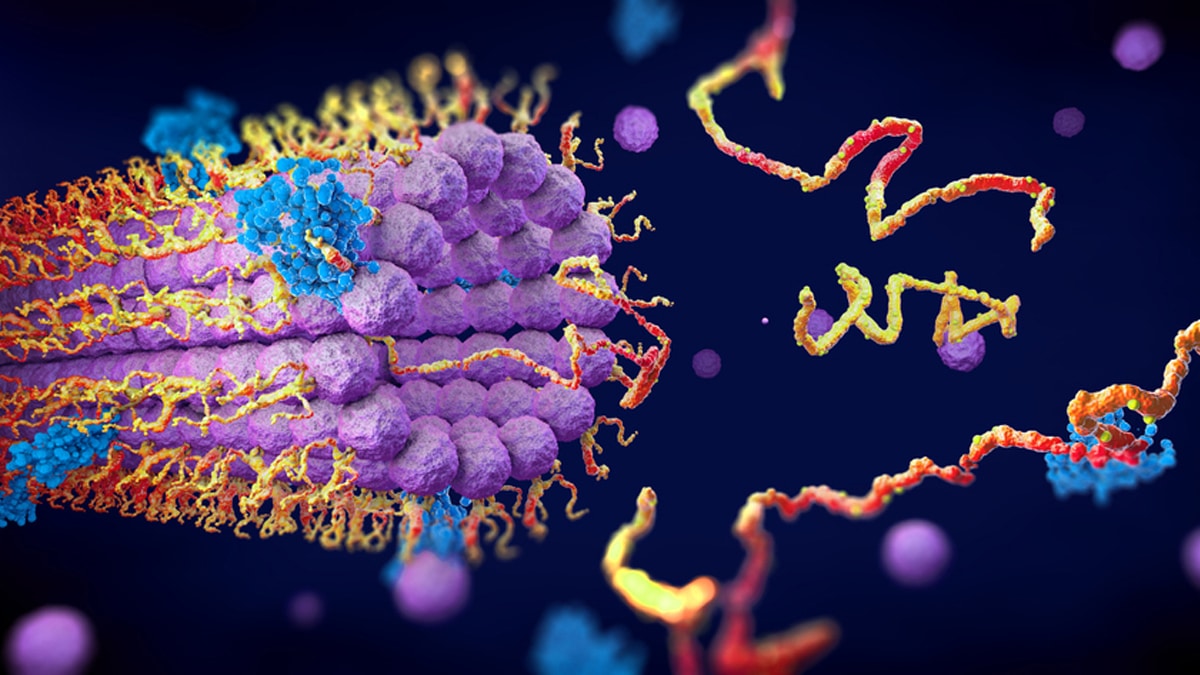How do allosteric drugs compare to more traditional orthosteric drugs?
Orthosteric drugs are compounds that bind to the active site of an enzyme. In order to bind to the active site, the shape of the compound is similar to the shape of the normal substrate for the target enzyme. Once bound, the orthosteric drug blocks the normal substrate from binding to the enzyme, inactivating the protein. Successful orthosteric drugs have high affinity for the active site of the target enzyme and can therefore outcompete the normal substrate. In contrast, allosteric drugs are compounds that bind to secondary sites on the target enzyme i.e., not the active site. Instead of directly competing with the normal substrate of an enzyme, binding of an allosteric drug to an enzyme triggers a conformational change of the protein. This conformational change can affect the shape of or accessibility to the active site, inhibiting binding of the substrate to the enzyme and modulating enzymatic activity.
What are some advantages of using allosteric drugs in oncology?
There are several advantages to using allosteric drugs in oncology.
-
- The specificity and selectivity of allosteric drugs. The active sites of enzymes within the same family can be highly conserved; thus, there is the possibility of “off-target” or “off-tumor” effects with orthosteric drugs i.e., the drug binds to the target enzyme but also enzymes within the same family. This can lower the efficacy of the drug and possibly have harmful side effects. On the other hand, allosteric binding sites are less conserved and more protein-specific. This increased specificity of allosteric drugs can lead to increased efficacy of the drug and a decreased chance of “off-target” effects as more of the drug reaches the intended target. Decreasing “off-target” effects also increases drug safety.
-
- The ability of allosteric drugs to modulate protein activity. With orthosteric drugs, direct binding of the drug to the active site of the target enzyme leads to inactivation of that enzyme. Since allosteric drugs bind to a secondary binding site that changes the conformation of the protein, there is an increased ability to modulate activity of the target enzyme. Therefore, effects of allosteric drugs on the target enzyme can range from complete inactivation to potentiation of protein activity only under certain conditions, allowing for greater control of enzymatic activity.
-
- Allosteric drugs could help overcome resistance of tumors to traditional orthosteric anti-cancer drugs. The high mutation rate of some tumors can result in a tumor “mutating around” a drug, leading to drug resistance. A combination of orthosteric and allosteric anti-cancer drugs could make it less likely a tumor can mutate around multiple drugs/drug classes, overcoming drug resistance.
-
- Allosteric drugs allow for identification of novel drug targets and previously inaccessible drug targets. Targeting allosteric sites on enzymes increases the number of potential drug targets and allows for targeting of enzymes where the active site is inaccessible to orthosteric drugs.
How can Gain Therapeutics’ SEE-Tx™ platform be used in allosteric drug development?
Gain Therapeutics SEE-Tx™ (Site-Directed Enzyme Enhancement) platform can identify novel allosteric sites in just 1-2 weeks with a hit rate of 14%.
The platform is agnostic and can be applied to any disease area, but the applications in Oncology are especially interesting. Focusing on allostery allows for several different possible mechanisms of action, from functional effects such as stabilization/destabilizing, to conformational effects such as activation/inhibition, as well as additional strategies such as targeted protein degradation (PROTAC).
In the area of oncology, Gain has been applying a destabilization method to destabilize proteins to cause a loss of function for proteins involved in cancers. Because of the incredible promise allostery has in oncology, such as greater specific and selectivity. new foundations for combining oncolytic agents for synergistic effects, or preventing/overcoming drug-resistance the ability to identify these novel sites with great speed and accuracy is a vital asset in developing drugs for patients suffering from cancers.

